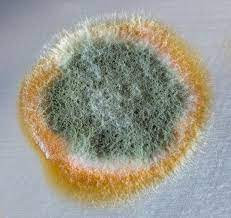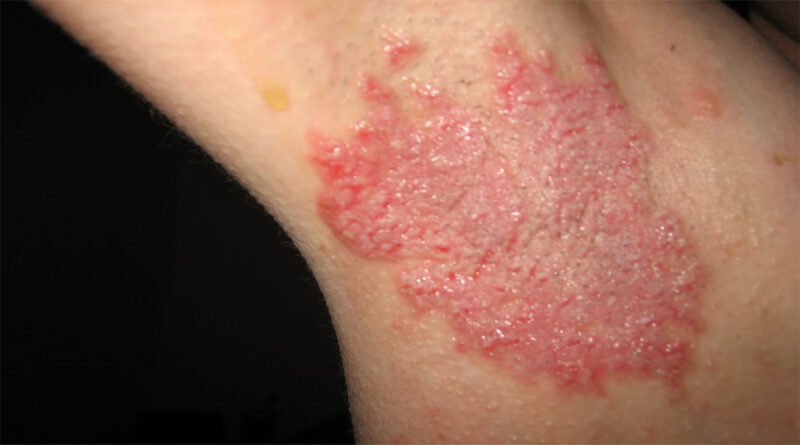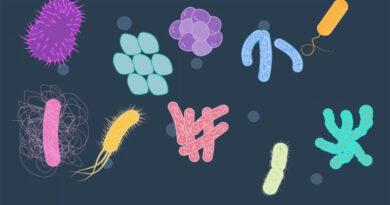What is Fungi?
Last Update on September 15, 2022
Fungi can be very complex multi-cellular or single-celled species. They can be found in almost any location, but the majority of them prefer to survive on land, primarily in the soil or on plant matter, as opposed to the sea or fresh water.
The decomposers are a species that is essential to the cycling of carbon and other elements and grows in the soil or on dead decaying plant material. Some are parasites of plants that spread illnesses like canker, rust, scabs, and mildew. Fungal diseases in crops can cause the farmer to lose a lot of money. A very small percentage of fungi can affect animals. These include skin conditions that affect humans including athletes’ foot, ringworm, and thrush.
The kingdom Chromista has a large number of these fungus-like microorganisms. Fungi are among the most common organisms on Earth and are significant to both the environment and human health. While some fungi live in soil or water freely, others associate with plants or animals in parasitic or symbiotic ways.
Fungi are eukaryotic organisms, meaning that their cells have different nuclei and membrane-bound organelles. Fungi were once considered to be part of the plant kingdom, but they have since been split from plants due to their lack of chlorophyll and distinctive structural and physiological factors. In addition, the main ways that fungi consume nutrients and engage in vegetative growth clearly distinguish them from all other living things, including animals. Fungi are organisms that develop from the tips of the filaments (hyphae), or bodies, of the organisms (mycelia), and they consume organic stuff externally before absorbing it into their mycelia.
1. Types of fungi:
Fungi are classified according to their life cycles, whether or not they have a fruiting body, how those bodies are arranged, and the kind of spores (reproductive or distributional cells) they produce.
There are three main categories of fungi:
- Multicellular filamentous moulds
- Macroscopic filamentous fungi
- Yeasts
1.1. Multicellular filamentous moulds:
Very fine threads are used to produce the moulds (hyphae). Hyphae form lengthy, branching chains by growing at the tip and repeatedly dividing along their length. The hyphae continue to expand and entwine until they create a web of threads known as mycelium. The hyphal tip secretes digestive enzymes. These enzymes break down soil-based organic materials into smaller molecules that the fungus may consume.
Spores develop on some of the hyphal branches that have grown into the air. Spores are complex and interconnected covered by a barrier that protects them from adverse environmental factors like drying out and extreme heat. They are so tiny that 500 to 1000 might fit on the head of a pin.
As spores allow the fungus to multiply and they are similar to seeds. Spores can be transmitted by wind, rain, or insects. When the correct conditions are present, they begin to proliferate and create new hyphae after finally landing in new habitats. Due to their inability to travel, fungi employ spores to locate new environments with fewer competitor organisms.
1.2. Macroscopic filamentous fungi:
Mycelium production underground is also a method of growth for microscopic filamentous fungi. They differ from moulds because they generate visible fruiting bodies (usually known as mushrooms or toadstools) that contain the spores. The hyphae that make up the fruiting body are closely packed and divide to create the various components of the fungus’ structure, such as the cap and stem. A 10 cm diameter cap can produce up to 100 million spores each hour from gills that are covered in spores.
1.3. Yeasts:
Yeasts are tiny, single cells that are like lemons and are similar in size to red blood cells. They reproduce by splitting the original parent cell into two daughter cells. On the yeast cell’s surface, buds that have detached leave scars. Saccharomyces yeast, for example, is crucial to the baking and brewing processes. One of the most popular model organisms for the genetic study is yeast, which is utilized, for instance, in cancer research. Other types of yeast, such as Candida, are opportunistic pathogens that infect people with weakened immune systems.
2. Who Gets Fungal Infections?
Fungal infections can affect anyone, including healthy individuals. People regularly breathe in or come into touch with fungal spores without becoming ill since fungi are widespread in the environment. However, these fungi are more likely to result in an infection in patients with compromised immune systems.

Some people have weakened immune systems from birth. Others may suffer from an infection like HIV that damages the immune system. The body’s capacity to fight infections can also be decreased by some medications, such as corticosteroids or cancer treatment.
Anyone with a weak immune system has to be aware that fungi infections can occur. Knowing more about fungi can aid you and your doctor in spotting fungal diseases early on. It might aid in avoiding significant consequences.
How certain groups are affected by mushroom infections:
- People living with HIV/AIDS
- Hospitalized Patients
- Organ Transplant Patients
- Cancer Patients
- Stem Cell Transplant Patients
- Medications that Weaken Your Immune System
3. Fungi diseases in humans:
The list of human fungi diseases:
- Ringworm
- Aspergillosis
- Histoplasmosis
- Blastomycosis
- Athlete’s foot
- Valley Fever (Coccidioidomycosis)
- Mucormycosis
- Paracoccidioidomycosis
- Talaromycosis
3.1. Ringworm:
A disease of the skin called ringworm is caused by a fungus. Because it can result in a circular rash (formed like a ring), which is typically red and itchy, it is known as “ringworm.” Ringworm can affect anyone. The fungus that causes this infection can reside on surfaces, clothing, beds, and towels in the home.

3.2. Aspergillosis:
A disease called aspergillosis is caused by Aspergillus, a common mould (a type of fungus) that can be found both indoors and out. Most people regularly consume Aspergillus spores without becoming ill. However, those who already have lung conditions or weakened immune systems are more sensitive to Aspergillus-related health issues. Allergies, lung infections, and infections in other organs are among the health issues brought on by Aspergillus.
3.3. Histoplasmosis:
An infection known as histoplasmosis is caused by the fungus Histoplasma. The fungus thrives in the environment, especially in soil that has been heavily contaminated by a bat or bird droppings. Histoplasma is primarily found in the central and eastern states of the United States, particularly in regions near the Ohio and Mississippi River valleys. The fungus also lives in portions of Central and South America, Africa, Asia, and Australia.
3.4. Blastomycosis:
An infection identified as blastomycosis is set on by the fungus Blastomyces. The environment is where the fungus thrives, particularly in damp soil and in organic materials that are degrading, such as wood and leaves. The fungus is primarily found in the midwestern, south-central, and southeastern states of the United States, particularly in regions near the Great Lakes, the Saint Lawrence River, the Ohio and Mississippi River valleys, and these regions around the Great Lakes. After inhaling the minute fungus spores, people can get blastomycosis.
Even though the majority of those who breathe in the spores don’t get sick, some do experience symptoms like fever and cough, and if the illness is left untreated, it can eventually turn serious.
3.5. Athlete’s foot:
Another name for an athlete’s foot is tinea pedis. It’s a specific kind of fungal infection that can harm your hands, nails, and the skin on your feet. Dermatophytes, a class of fungi that may flourish in the warm, moist spaces between your toes, are what causes the illness.

It can spread from one person to another and is highly common among athletes. Additionally, it can be acquired from contaminated surfaces such as the flooring of locker rooms or public showers.
3.6. Valley Fever (Coccidioidomycosis):
The fungus Coccidioides is the source of valley fever, commonly known as coccidioidomycosis. It is known that the fungus lives in the soil in the southwest United States, as well as several regions of Mexico, Central America, and South America. South-central Washington has also recently seen the emergence of the fungus. The small fungal spores in the air can cause Valley fever in humans, albeit the majority of those who breathe them in don’t become ill.
The majority of Valley fever sufferers recover on their own in a matter of weeks to months, although a small percentage may require antifungal therapy. There are some categories of people who are more likely to suffer from a serious illness. People who are more susceptible to developing severe Valley fever should try to avoid inhaling big amounts of dust if they’re in places where Coccidioides is a widespread environmental problem.
3.7. Mucormycosis:
A group of fungi described as mucormycetes are the source of the deadly but uncommon fungal infection known as mucormycosis (formerly known as zygomycosis). These moulds are present everywhere in the environment. People with health issues or those who take medications that reduce the body’s capacity to fight infection and disease are more likely to develop mucormycosis. After breathing in fungus spores from the air, it most frequently affects the sinuses or the lungs. It may also appear on the skin following a burn, cut, or other skin damage.
3.8. Paracoccidioidomycosis:
The fungus Paracoccidioides is the source of the infection known as paracoccidioidomycosis. Some regions of Central and South America are home to this fungus. Paracoccidioidomycosis can harm anyone who lives in or travels to locations where Paracoccidioides are present, but it most frequently affects men who work outside in rural settings.
3.9. Talaromycosis:
The fungus Talaromyces marneffei is the source of the infection referred to as talaromycosis. Both the fungus’s and the infection’s names have changed. Talaromycosis was once known as penicilliosis, and T. marneffei was known as Penicillium marneffei.
Only those who reside in or go to Southeast Asia, southern China, or eastern India are susceptible to talaromycosis. The majority of individuals who get talaromycosis have a medical condition that impairs their immune system, such as HIV/AIDS, or another illness that lessens the body’s capacity to fight off pathogens and disease.
4. Prevention:
For the prevention of fungi infections, good cleanliness is also essential.
Tips try to:
- Keep your skin dry and clean, paying special attention to your skin’s pores.
- Wash your hands regularly, especially after coming in contact with people or animals.
- Do not use towels and personal care items of others persons.
- Wear shoes in the changing rooms, public showers, swimming pools, and bad-rooms
- Clean the equipment in the gym both before and after using it.
The ringworm virus spreads quickly. While skin-to-skin contact is the most typical way for it to spread, you can also get it by touching something that has been touched by someone who has ringworm.
You should keep your skin dry and clean to fight off ringworm. Put on clean, dry clothes right away after working out or taking a shower. Avoid making personal touch with ringworm patients. In public showers, you should always wear shoes, especially flip-flops.



